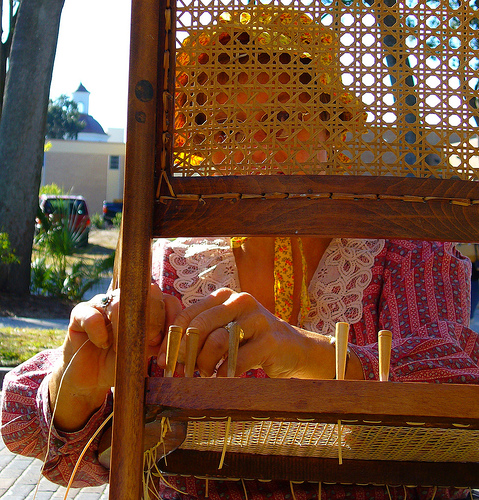Chair Repairs: Preparing to Cane Chair Seats

Recane Damaged Chairs
There is never much question as to whether cane is the right material for repairing the seat of a particular chair. If there's a series of small holes around the seat's perimeter, you will be able to weave a cane seat. If there is none, you can't. Occasionally broken cane seats are covered by plywood, upholstery, even tin. Turn the chair over, and examine the seat rails for cane holes. The fact that a chair once had a cane seat doesn't necessarily mean the seat could be rewoven. A lot of chairs have machine-woven cane seats that are glued into grooves. These can't be rewoven, though the seats can be replaced.
Before you begin to recane, get the chair into shape. Take away any seat covering the caning area, mend breaks, cut away any old cane left, clear out the cane holes, and refinish the chair if needed.
Cane is generally sold in hanks or bunches of about 1,000 feet, which is adequate to do four average chair seats. It comes in six sizes, according to strand width. What is known as common is the widest cane and is appropriate for 5/16-inch cane holes that are around an inch apart. Carriage cane is the thinnest size and is perfect for 1/8-inch holes that are 3/8 inch apart. The four in-between sizes are superfine, fine-fine, fine, and medium. It's a good idea to show the seller a sample of the old cane if you've got one. You'll also require five or six tapered pegs to hold the cane in place while you work.
To make the cane workable, soak in lukewarm water around 10 to 20 minutes. Prior to using a strand, wipe it dry, so the water will not make the wood of the rail swell and reduce the size of the cane holes.
Here are the Detailed Steps in Recaning Chairs








